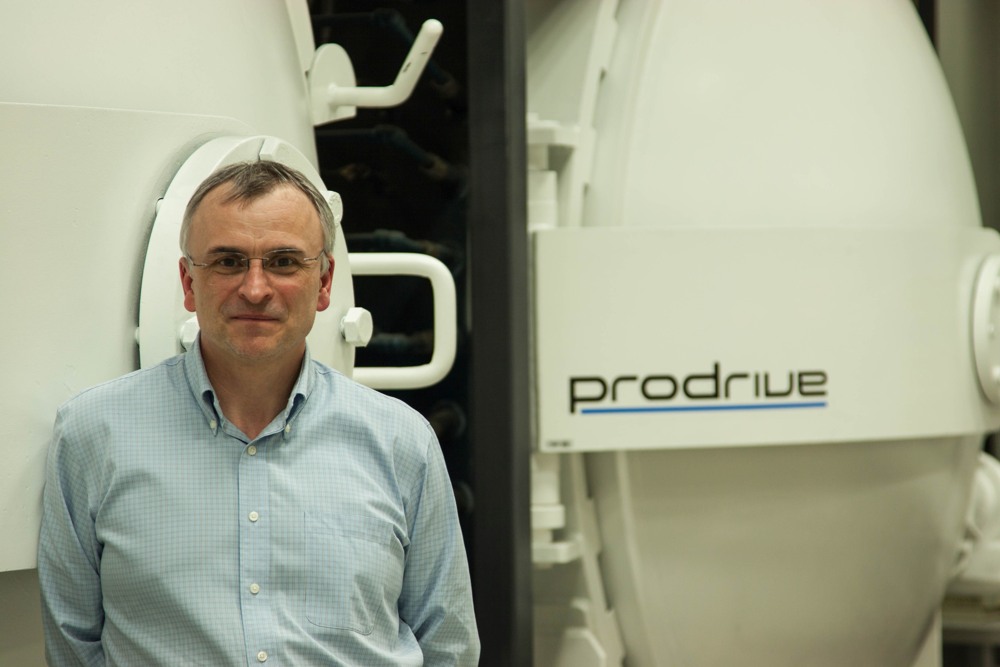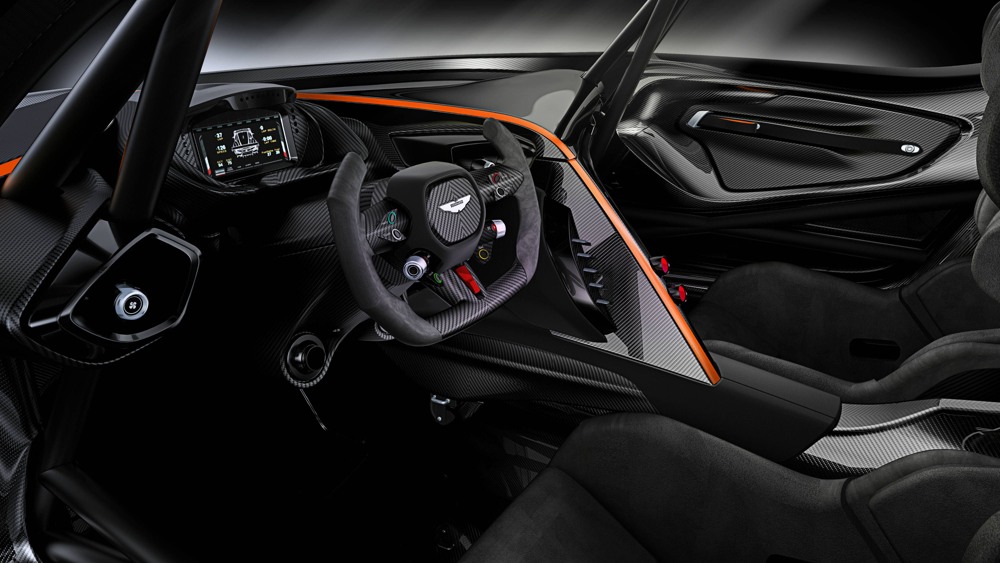Championing the conversion to carbon fibre

To find out about the future of carbon-fibre reinforced plastic (CFRP) in the wider automotive industry, Composites in Manufacturing spoke to John McQuilliam FIMMM, chief engineer at Prodrive Composites and board member of the British Composites Society.
The global push to drive down emissions is being met head-on by vehicle manufacturers as they turn to electrification and lightweighting. Composites are one solution to producing significantly lighter cars and are well known and widely discussed but we are yet to see a significant trickle down from its almighty perch as the mainstay of high performance vehicle material selection.
Is the composite manufacturing industry ‘really’ ready for the potential of high volume, fast production of CFRP saloon car structural parts?
“If I’m completely honest not currently, but materials are being developed and the manufacturing capacity increased to meet forecasted demand,” John McQuilliam begins. “The fundamental problem is that there is a shortage of large composite companies with all the attributes you need to supply the quantities of parts required by OEM production lines. We are one of the few and it has its difficulties.”
What are the difficulties?
“The difficulty lies in the discipline of making many identical parts a day in the traditional composites manufacturing environment, which is typically set up for short production runs. For a frame of reference, the quantities you would usually make over the life of a component in motorsport or for prototyping, you need to complete every week to supply an automotive manufacturer. The ability to maintain a consistent delivery takes a large disciplined company.
“CFRPs are expensive and current production processes are too slow for mass production. What kinds of material developments and processes are you looking at that would solve these shortcomings?
“We are the biggest supplier of large carbon fibre parts to the UK automotive industry. We are looking at things like out of autoclave solutions, the use of rapid cure resin systems and automation, those are three key areas. With automation we currently use CNC cutters to create individual pieces of prepreg, the laminators then get a kit that allows them to very quickly remove the backing paper, position it and apply. We also use CNC milling for finishing our parts but, there is still a lot of room for automation to accelerate the production time.”
Everything needs to change if we are to redesign car parts based on composites, so are we thinking enough about composite drapeability, fibre direction, reinforcements, how many layers are needed and material thickness, etc.?

“That forms a good proportion of my job, the reality is that there’s very few parts of a car that you can’t make from carbon fibre. We know this because of the multiple high-performance manufacturers with road-going vehicles. A difficulty that we encounter quite often is developing a carbon fibre part that must act interchangeably with an existing part rather than designing for composites from the onset. BMW is one of the shining examples in the industry: they have decided to invest in composites knowledge and skills and done a lot of work developing it for their cars and motorcycles. Their active involvement means they will have learnt how to make things easily and efficiently from composites, a big part of which is designing for composites from the beginning.”
Have any OEMs approached you to incorporate composites from the design phase?
“We’ve had talks with several large British manufacturers. That’s what you need; to be in at the beginning makes a big difference.”
What evidence or examples have you seen that demonstrates the industry’s commitment to the long-term vision for the adoption of composites by the serial automotive industry?
“Everyone knows of carbon in hypercars and supercars; it’s being done and everyone is getting used to it. We need to take the positive lessons from those high-performance vehicles, simplify the geometry and then sacrifice some of that absolute performance for cost and then you’re starting to get where you need to be for mass production.”
Do you think CFRP will be the lightweight solution manufacturers choose?
“It depends on volume, aluminium has many advantages and it’s much closer to what manufacturers are accustomed to. I think that composites are going to come into their own as new mobility solutions present themselves. As you electrify the drivetrain – battery enclosures, motor cases, specific transmission layouts, etc. for those vehicles, they will invest in composites due to their light weight and strength. These vehicles make the most of composite’s advantages, you can mould it, put some quite difficult shapes in it and join it all together to create complete structure.
“Another advantage of CFRP is the turnaround time. We have quite a lot of business simply because it’s a quick and relatively cheap way to make a part, owing to the inexpensive tooling and flexibility of the process. If you want a car part in a certain shape in eight weeks’ time, it can be done, right the way from CAD through to components ready to ‘bolt on’.”
How is the UK composites industry? What are some key wins it can shout about in the automotive sector?
“We’re in a really great place, we’ve pioneered throughout the last 50-odd year life of carbon composites. I don’t see that changing because we’ve the right blend of skills and experience to maintain it. As long as we continue to innovate and be at the forefront it will be hard for disruptors from America or the Far East.”
Typically, what structural car components stand to benefit the most from being manufactured from CFRP?
“I’d say a road car is similar to a race car - you benefit the most from reducing un-sprung weight and the rotating mass, as they have the biggest effects on handling and acceleration, which in turn reduces energy consumption. This is followed by high up weight and then weight overhanging the axles. Wheels, suspensions members, extreme body panels, crash structures and the chassis can all benefit from being manufactured in CFRP. Changing just the wheels would significantly reduce energy consumption, it takes quite a lot of energy to begin rotating them, even when compared to moving the mass of the vehicle itself.”
What about the difference between purely performance parts and visual parts, is there a significant difference in the design and manufacture?
“Visual parts are definitely the harder of the two to do; the discipline to make them and ensure that they’re virtually perfect requires a honed process. You’re talking about making sure each ply is millimetre perfect and the joins between them are exactly on the edges of panels. Thankfully we can now model each ply in 3D within our software, template it and create a test piece, once that’s validated its easily reproducible. The care and attention required to, for example, get the split line right on the car’s centre line is painstaking but we have a wealth of experience behind us.”
Do we assume the first wave of mass produced CFRP saloon cars will be made using thermosets, which are not recyclable? When can we expect thermoplastics to become more prevalent as the material of choice?

“To start with, I think adoption is more likely to come from newcomers without significant legacy investment. Composite parts have a longer life than metal parts due to their very good environmental resistance (unlike steel) and fatigue properties (unlike aluminium). Composite repairs are well understood so it’s possible there wouldn’t necessarily be the need to scrap as many vehicles. If you do finally get to the end of a thermoset CFRP part’s life, it can be recycled in one of two ways. You can burn off all the resin, leaving the carbon fibres for re-purposing or it can be ground up into small pieces to be used as a filler. Another consideration is that as we move towards electrified powertrains and the use of composites, vehicles will be less complicated and more durable, we will be seeing vehicles reach 1,000,000 miles. For these vehicles, recycling won’t just start at the end of its life, they will have been produced from sustainable materials and perhaps feature recycled parts.”
Mass production of composite car parts will require lots of prepreg that will need to be stored correctly and lots of waste to be disposed. What is the contingency for this possibility?
“When you start to use high quantities of prepreg it stops being a problem. Prepreg requires refrigerated storage, at room temperature its life is about a month, but if you use it within a month you remove the need for a freezer. So, if you have high volumes with steady production and control you can use it within two weeks then you avoid needing refrigerated stock material. Alternatively, you can have the prepreg line as part of the factory, the composite company of the future could have the line onsite, then you just mix it up as and when you need it.”
“It’s a very obvious question, but ultimately will the price of CFRP saloon cars be an issue in comparison to traditionally built cars or will automotive OEMs be forced to swallow any additional production costs just to satisfy the EU CO2 mandate?
“In the short-term they will have to swallow some of the production costs,” McQuilliam concludes. “Steel and aluminium will always be cheaper than composites, despite the expensive tooling, due to the economies of scale. As far as future vehicles are concerned, once batteries and electric motors are mass produced, they should be cheaper than an engine and transmission which will create an offset.
“The depreciation of the vehicles will also be spread over a greater number of miles. There are other considerations too: cars could be facelifted every season at no significant additional cost as you need to refresh the tooling anyway, and you can make an advantage of it. With a gradual change to vehicles they might hold their value better as there won’t be the sudden step-change that we see every 3-4 years with most car models.”








